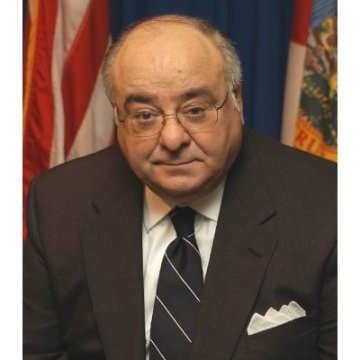
Title: Crime Scene Investigation and Management
Plenary Speaker
Prof. Anthony Schembri
Former Police Commissioner in New York, United States
Abstract
This will be a presentation of real crime scenes and the management of efforts bringing together the forensic experts and the investigative personal to solve real cases. Having lead the Homicide Department department unlike CSI and other programs, police fail to collect and properly analysis a crime scene which I will demonstrate. We need to interpret crime scenes. Sloppy police investigations, lazy forensic personnel team up to reduce the ability to solve cases with solid evidence.
Biography
Anthony Schembri is a respected law enforcement and academic professional with over four decades’ experience in the field. Over the years, he has drawn praise from such varied sources as New York City Mayor, President Jimmy Carter, Florida Governor Jeb Bush, and New York Governor Mario Cuomo. First appointed to the Brooklyn District Attorneys Office he advanced to Deputy Chief of the Narcotics Bureau, then to Director of Training at the District Attorneys Police Academy. Anthony Schembri has served as the city’s Deputy Inspector General, investigating cases of major crime and corruption. He was appointed by the Mayor of New York as Corrections Commissioner, a position putting him in charge of 12,000 uniformed officers and 20,000 inmates at 19 separate jail facilities. Today, the Citrus County, Florida, resident serves as a Visiting Professor at Oxford and Sheffield Hallam University and named Outstanding Professor of the Year at the University of Florida.

Title: Violent Homicide Offenders, ACES, and Brain Development
Plenary Speaker
Prof. Marian Swindell
Mississippi State University United States
Abstract
Research on adverse childhood events (ACES) indicates an association with increased risk of offending in adulthood. Physical and sexual abuse, physical neglect, and household drug and alcohol abuse have been found to be correlated with adult criminal activity, according to the United National Human Development Index (HDI). Kessler et al (2010) found in research of 51,945 adults in 21 countries that 39% experienced at least one ACE before age 18 with the most common ACE being parental death (12.5%), followed by physical abuse (8%), divorce (6.6%) then family violence (6.5%). Self-reports of sexual abuse were startling at 12.7%, compared to .3% from official records and 36.3% for emotional abuse, compared to .4% from official records. Brain scans of homicide offenders show reduced gray matter in areas of emotional processing, behavioral control, and social cognition. Decades of research show that childhood events change brain architecture and formation. These changes often don’t “show up” until adulthood and through adult behavior. A new study involving MRI scans of hundreds of brains of convicted prisoners suggest significant differences in a homicidal offenders compared to violent, non-homicidal offenders. The purpose of this presentation is to explore and discuss the relationship between adverse childhood events, resulting changed in the bran, and adult homicidal offending.
Biography
Dr. Swindell is a professor of Social Work at Mississippi State University and recently made history as the first teaching Ph.D. and MSW in Social Work to be awarded tenure and achieve the rank of professor. Swindell also independently contracts as a mitigation expert and expert witness, working with men serving capital murder sentences on death row in the US. She has over 30 years of experience in forensic social work and brings a wealth of information from sociology, social work, and forensic testimony evidence retrieval to this conference. Dr. Swindell completed her Ph.D. (2001) and MSW (1992) in Social Work from the University of Alabama.

Title: Forensic Science in Crime Fighting : Caseworks Review
Keynote Speaker
Dr. Anna Barbaro
President, Worldwide Association of Women Forensic Experts (WAWFE), Italy
Abstract
Forensic Science plays a crucial role in criminal investigation. Especially DNA typing represents the most important tool for solving forensic caseworks and biological relationships since it allows the identification of a victim or it can link an individual to a crime or can connect different crimes. The presentation is an overview about the application of forensic methods, importance of proper evidence collection, DNA technologies available, role of the forensic expert. In addition several real caseworks from SIMEF laboratory will be discussed.
Biography
Anna Barbaro has completed her European PhD in Forensic Genetics (PhD) at University of Santiago de Compostela (Spain). She got a Diploma at the School of Specialization in Applied Genetics and a Master Diploma in Psychological and Behavioral Techniques of the Criminal Investigation at the University of Rome La Sapienza (Italy). She has published more than 150 papers, including conference presentation, she is Author of 5 technical Manuals and of some chapters in other books. She serves as President of the Worldwide Association of Women Forensic Experts, she is honor member of some scientific associations, she serves as reviewer for several international scientific journals and she is Member of the Editorial Committee of some international scientific journals. Invited speaker at various national and international conferences, organizer of courses and conferences about Forensic Sciences, member of the Scientific Committee of several courses and conferences. She has been researcher at the University of Alcalà (Spain) since September 2020 to Dicember 2022. She is actually the Director of Studio Indagini Mediche E Forensi (SIMEF) laboratory in Italy.
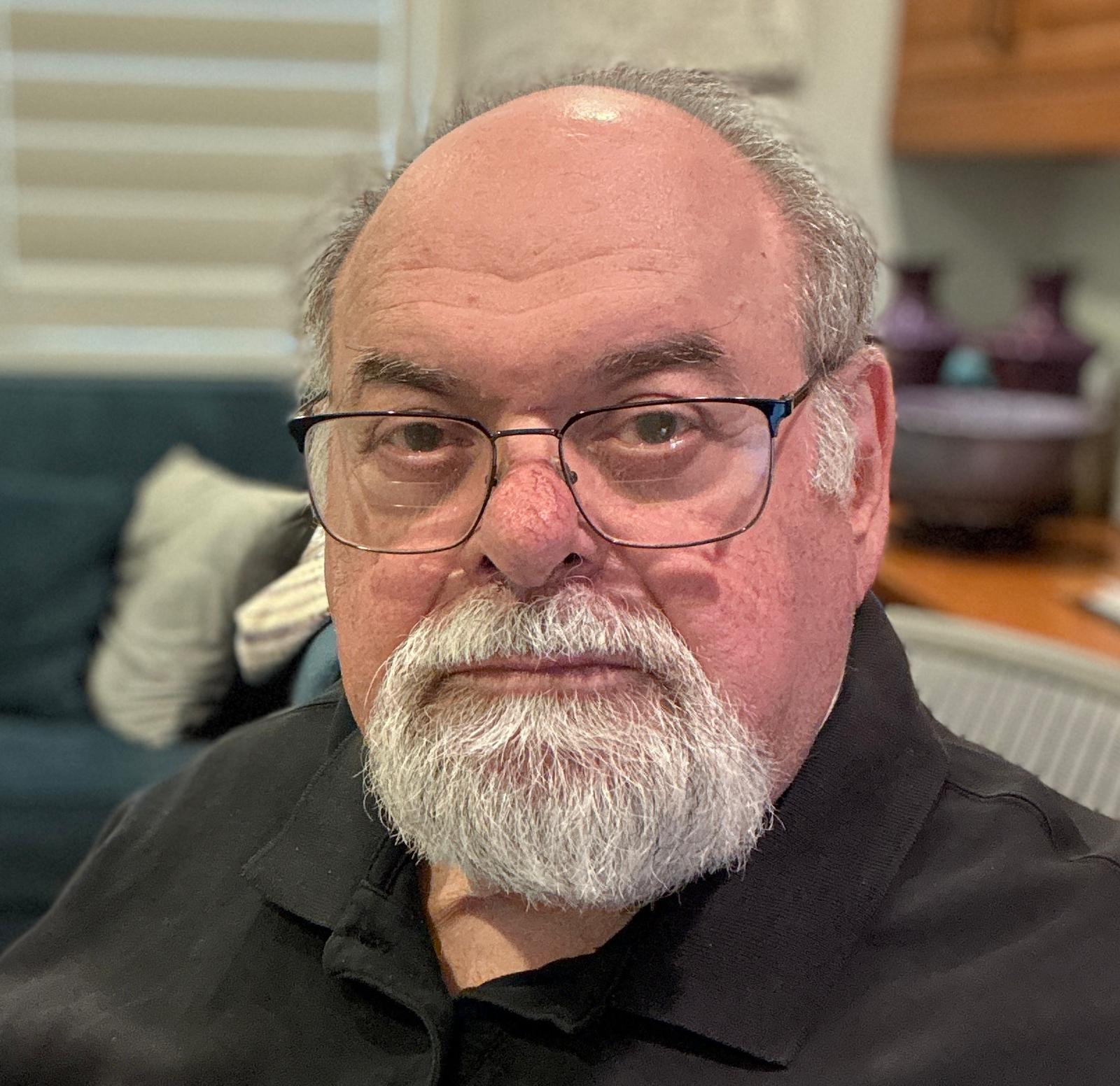
Title: Elements of Effective Crime Scene Investigation
Plenary Speaker
Barry Fisher
Forensic Science Consultant USA
Abstract
The purpose of this lecture is to review some of the key elements of effective crime scene investigation. We have only one chance to do it correctly, so we must make the most of our effort. Collecting evidence has two distinct parts: legal aspects and scientific ones. Both need to be followed carefully. Evidence should be collected beginning with the most fragile first. This generally means documenting the crime scene through photography and notes. This is done first before moving or collecting anything. Many jurisdictions do not allow anyone other than the coroner or medical examiner to touch the body. Crime scene searches should be done systematically and, when possible, with two crime scene investigators. Investigators should be consulted, but crime scene personnel should not be biased by the police investigator's initial opinions on the case as they may not be correct. Notions of what transpired during the commission of the crime should be fluid, and CSIs should be able to modify their conjectures as additional facts are uncovered. Crime scene investigation requires patience, attention to detail, and careful observation. These skills improve with practice.
Biography
Barry A. J. Fisher served as crime laboratory director for the Los Angeles County Sheriff's Department until his retirement in 2009. He is a past president of the American Academy of Forensic Sciences. He served as president of the International Association of Forensic Sciences and president of the American Society of Crime Laboratory Directors. He has lectured internationally on forensic science laboratory practices, quality assurance, and related topics. Fisher has consulted for the UNODC, and the US DOJ, International Criminal Investigative Training Program (ICITAP). His BS degree is in chemistry. He also has an MS degree in Chemistry, and an M.B.A. degree.

Title: APPLIED CRIME THEORY
Keynote Speaker
Dr. Aviva Twersky Glasner
Masters in Forensic Psychology United States
Abstract
Criminology includes the study of all aspects of crime and law enforcement, thus legislators, social workers, probation officers, judges, etc., can become “working” criminologists.
In an applied, professional context, being able to identify and provide intervention for this small population, who despite size, are at risk for offending.
According to Wistanley, Webb and Conti-Ramsden, 2007, “There is now substantial literature demonstrating that a disproportionate number of young people who encounter youth justice services evidence unidentified language difficulties. Conversely, there is a dearth of research pertaining to criminality outcomes among those individuals with identified developmental language disorders (DLD) who have received such interventions.”
Early Intervention employs the ideals of the Americans with Disabilities Act (ADA) and the Individuals with Disabilities Education Act (IDEA). Early intervention primarily is designed to intervene with at risk children “For those infants and toddlers with a disability or developmental delay, intervening early can make all the difference in the world. Early intervention provides services and support to promote the best possible developmental outcomes, and it enhances the capacity of families to meet their child’s needs. For children at significant risk, early intervention can serve as a protective buffer against the multiple adverse influences that may hinder their developmental progress (found online, Making Hope A Reality: Early Intervention for Infants and Toddlers With Disabilities | ZERO TO THREE).
Discussion with center on risk factors associated with delayed language in youth.
Biography
Dr. Aviva Twersky Glasner, Ph.D. received a Masters in Forensic Psychology and her doctorsl degree in Criminal Justice. She has worked with Deaf individuals and developed her research interests around using criminological theories to examine the role that socialization may play in criminality of Deaf inmates.
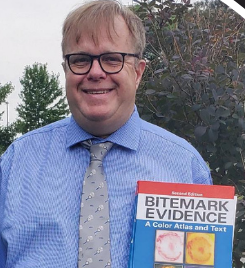
Title: THE FORENICS OF SUICIDE
Keynote Speaker
Dr. James Frizzell
Dentist, Frizzell Dental Canada
Abstract
In a synopsis, investigation of suicides. Methods of suicide: gunshot wounds, hanging, drug overdoses, jumping off bridges or Niagara Falls or the Golden Gate Bridge, and chemical suicide. In poverty countries, hanging suicide is economically cheaper than any other suicide, and is the most common suicide method of choice.
Also, forensic analysis of these types of suicides. And a look into how the victims are thinking mentally at pre-suicide.
Biography
Dr James graduated from a one year course, McGill University, Dental Forensics Program; part on-campus training with the Surete du Quebec Forensics Team. Dr James is focusing on Child Abuse, Elderly Abuse, Human Trafficking, and Intimate Partner Violence. He also gives educational PowerPoint presentations on these topics. Also, trained at University of Tennessee, Body Farm, and Clandestine Grave Recovery. Dr Frizzell’s motto is: “The Power of Observation”, in the forensic’s world.
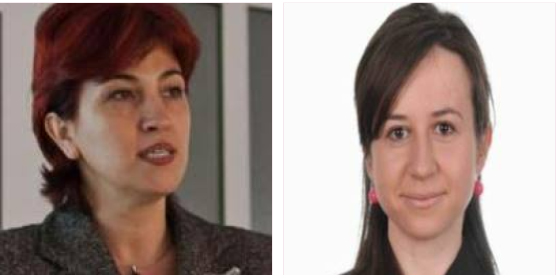
Title: A FORENSIC PERSPECTIVE ON EXTREME INTIMATE PARTNER PHYSICAL VIOLENCE
Keynote Speakers
Prof. Beatrice Gabriela Ioan & Dr. Bianca Hanganu
Grigore T. Popa University of Medicine and Pharmacy of Iasi, Romania
Abstract
Introduction. Intimate partner violence is a broad term that includes various types of violence (i.e., physical violence, sexual violence, stalking and psychological aggression) towards a current or former romantic partner. In general, this type of violence is often encountered all over the world. However, its extreme form- homicide, is a rare phenomenon and research on this topic resulted in several differences between cases where the victims are men and cases where the victims are women. As such, the aim of this paper is to present the pattern of injuries from these two perspectives.
Material and methods. Starting from two cases of intimate homicide- one where the victim was the husband and one where the victim was the wife, the authors performed a literature review to identify specific patterns that characterize the injuries found during autopsy on this type of victims.
Results. Comparing the two dead bodies, a significant difference regarding the injuries could be observed: the female body sustained many different types of injuries, recent and old, with various degrees of severity, while the male body sustained a single lethal stab wound, in the left anterior chest area. As the literature confirms, female partners die after prolonged period of violence, rather as a result of exhaustion than as a result of intentional killing from their partners. On the other side, male partners die after a sole severe injury, aimed specifically at killing. Usually, the female offender was previously a victim herself, and the decision to kill came as a desire to end the abuse.
Conclusions. The analysis of the presented cases and the literature data highlight the magnitude of different forms of intimate partner physical violence that can lead to death of any of the partners and the need to take appropriate measures to prevent such extreme consequences.
Biography
Forensic Pathologist, Beatrice Gabriela Ioan is Professor of Legal Medicine and Bioethics at “Grigore T. Popa” University of Medicine and Pharmacy of Iasi, Romania, She also serves as forensic pathologist at the Institute of Legal Medicine of Iași. She graduated from the Faculty of Medicine in 1993, the Faculty of Psychology in 2002 and the Law Faculty in 2012. In 2004 she graduated from the Master Program in Bioethics at Case Western Reserve University, USA. She is a member of the Committee on Bioethics of the Council of Europe and its former Chair and a member of the International Bioethics Committee- UNESCO. Bianca Hanganu is a forensic pathologist, specialist physician, and assistant professor in Forensic medicine at Grigore T Popa University of Medicine and Pharmacy of Iasi. She attended many international scientific meetings where she presented her work and has published papers in the field of forensic medicine, bioethics, and medical communication, her main areas of interest.
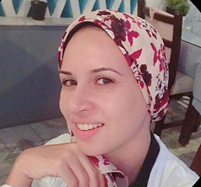
Title: Forensic DNA profiling in forensic field: Challenges and recent perspectives
Speaker
Dena MN Abdel Moawed
Zagazig University Egypt.
Abstract
Forensic DNA profiling has become vital in solving many crimes nowadays. DNA fingerprinting (also called DNA profiling or forensic genetics) is a technique used in forensic work for the identification of individuals or samples by their unique DNA profiles. DNA profiling can be used in personal identification, paternity testing, mass disaster cases and identification of body fluids. In practice, precautions should be adopted for accurate and precise outcomes. This review highlights the challenges in using DNA profiling in forensic field and discusses important tips related to practical work and applicability referring practical experience and review of literature.
Biography
Dena Mohamed Naguib has completed the PhD in forensic medicine and toxicology from faculty of medicine, Zagazig university, Egypt in 2018. She developed her practical experience by completing the Egyptian fellowship in forensic medicine and toxicology in 2022. She is an assistant professor of forensic medicine and toxicology in Zagazig university and senior forensic consultant in the Egyptian ministry of health. She has a long experience of 14 years in forensic field through teaching, research work, clinical practice, conferences speaker and workshop training

Title: The Impact of Generative AI on Digital Forensics
Keynote Speaker
Associate Professor (Dr) Sheeba Armoogum
University of Mauritius, Mauritius
Abstract
The Impact of Generative AI on Digital Forensics
Sheeba Armoogum1, Vinaye Armoogum2,
1Department of Information & Communication Technologies, University of Mauritius and 2Department of Industrial Systems Engineering, University of Technology, Mauritius
Digital forensic science has helped investigators in unravelling crimes on digital platforms to a vast extent. Although substantial pieces of evidence and DNA of the culprits can convict a criminal in a real-world crime, digital forensics relies entirely on digital footprints. However, the evidence obtained mostly identifies the users or the user account(s) associated with the digital shadow. With the escalating growth in the usage of generative Artificial Intelligence in cybercrime, the metadata acquired by the digital investigation requires further examination to identify the actual digital footprints. Cybercriminals are using generative AI to counterfeit text, images, voice and videos. This Deepfake technology and catfishing method may misdirect forensic observation and investigation, posing a significant threat to the investigation. Our research work observed that digital forensics investigation requires extensive and exhaustive methods to infer the shreds of evidence obtained.
Biography
Dr Sheeba Armoogum is an Associate Professor at the Department of Information and Communication Technologies (ICT) at the University of Mauritius (UoM). She holds a PhD in Cybersecurity and a South African Patent related to Cybersecurity classified under the World Intellectual Property Organisation (WIPO) Inventor Class H04L from the South African Patent Office. She has been recently awarded the Global Women Inventors & Innovators Network (GlobalWIIN) Special Recognition Award 2023. Currently, she heads the CyberSecurity & Forensics Research Group.
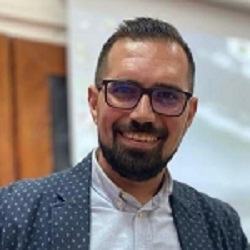
Title: Mental Illness: A Cause of Terrifying Crime. Case Study
Keynote Speaker
Andrei Ceobanu
Crime scene investigator and firgerprints examiner, Stefan cel Mare University, Romania
Abstract
To be culpable for a criminal act, a person must be criminally responsible or legally sane. Certain mental conditions may lead to a person being acquitted from the charges. Though legislation differs between nations, psychotic conditions are the mental conditions most often leading to legal insanity. The forensic conclusion depends on evaluated symptoms of mental illness in the defendant at the time of the crime, and on how these symptoms affected the defendant’s behavior and perception of reality at the time of the alleged crime. This is in some sense true regardless of legislation. The preponderance of people found not guilty by reason of insanity are schizophrenic.
Schizophrenic murderers generally commit, alone, a non-premeditated murder. They usually strangle their victim in a sudden attack, whereas murderers without any pathology usually premeditate their crime. 86% of perpetrators with schizophrenia have been in a delirium at the time they committed murder, among four main themes: persecution, thought insertion, mysticism and megalomania. Schizophrenia is a chronic brain disorder that affects less than one percent of the population. When schizophrenia is active, symptoms can include delusions, hallucinations, disorganized speech, trouble with thinking and lack of motivation.
The case study presents a double murder committed by a schizophrenic perpetrator. Particularities of this case include „voices from Heaven” and a mix of affection for one of the victims and mysticism.
Biography
Andrei Ceobanu graduated Faculty of Law and Romanian Police Academy, Bucharest, in 2010. Ever since he works as a forensic specialist, crime scene investigator, and fingerprints specialist. He developed a local forensic laboratory and manages the activity since 2017. In 2020 started teaching forensic classes as an Associate Assistant at the Faculty of Law at Stefan cel Mare University, Suceava, Romania.

Title: Vicarious Trauma versus Wellness, when ‘Every Contact Leaves a Trace’ in Forensic Professions
Speaker
Leggie L. Boone
Forensic Practitioner, Walden University, USA
Abstract
This presentation will describe the secondary trauma potentially expecienced by the forensic professional in varying disciplines. Edmond Locard’s exchange principle is reinforced in forensic application and it can also be referenced for the psychological traces that remain after encountering forensic evidence. Tools for coping, self-assessing, and preventive care will be explained. Recognition of the symptoms that may incur, develop, and evolve is necessary for peers and leadership as there is a growing effort to maintain quality of performance, transition in skill, and advancement with the growing demands, pressures, and typical morbid nature of the position.
Biography
Dr. Leggie Boone is a Forensic Analyst in Florida, an educator at Walden University, and president of Generation ForSciTe, a combination of Forensic Science and Technology subject area consultation services, publishing assistance, and research advising. Dr. Boone completed her PhD from the Public Policy and Administration program through Walden University. She has worked in forensic science fields since 1993, as an autopsy technician, crime scene investigator, and latent print analyst, as well as an educator in Maryland and Florida. She has also contributed to multiple publications, including Someday My Prints will Come (a forensic foundation to fingerprints with puzzles and activities), So You Want to Be a CSI, a forensic textbook, and the international Manual of Crime Scene Investigation.

Title: Forensic Toxicology: Where science becomes Sherlock, unraveling clues and scripting the truth
Speaker
Meri Stojanovska
University of St. Cyril and Methodius Macedonia
Abstract
Forensic toxicology serves as the guardian of truth, employing rigorous scientific methods to identify, quantify and interpret the presence of toxic substances in biological samples. By meticulously analyzing blood, urine, hair and tissues, toxicologists have the power to unveil the invisible footprints left behind by drugs, poisons and chemicals. But why is forensic toxicology such a vital component in criminal investigations? The answer lies in its ability to provide crucial evidence that can make or break a case. Through meticulous analysis, toxicologists can determine if a substance played a role in a crime, identify potential perpetrators, and establish timelines of events. Whether it's uncovering the presence of illicit drugs at a crime scene or revealing the effects of a toxic substance on a victim's body, forensic toxicology is an indispensable tool for investigators and legal professionals. Moreover, forensic toxicology extends beyond the realm of crime. It is instrumental in ensuring public safety by identifying toxic substances in the environment, monitoring drug use trends, and assessing the impact of chemicals on human health. Toxicologists play a vital role in identifying and combating the illicit drug trade, enhancing workplace safety, and safeguarding communities from the perils of toxic exposure.
Ultimately, forensic toxicology is an indispensable tool for untangling the complex web of chemical interactions within the human body. It empowers investigators, prosecutors, and legal professionals to piece together the evidence, substantiate or debunk claims, and ensure the fair administration of justice
Biography
Meri Stojanovska has completed her MPharm degree from the Faculty of Pharmacy at the University of St. Cyril and Methodius in Skopje, Republic of Macedonia. Prior to her graduation, she completed a two-month internship at Roche, where she immersed herself in valuable experiences and insights, followed by another two-month internship in Madrid, Spain focusing on forensic science. She’s currently working at Veeva Systems and one of her published abstracts is “Knowledge, opinions and attitudes of the general population in the Republic of N. Macedonia about vaccines and vaccination" which was presented at the 7th Congress of Pharmacy with international participation.

Title: A critical review of forensic profiling techniques from two different authorities
Speaker
Katie-Jane Hobbs
Havant and South Downs College - Alton, United Kingdom
Abstract
When considering a suspect of a crime there are many possible aspects that must be considered about the individual themselves and the crime scene they have left behind. The methods used by law enforcement in order to try and create a criminal/forensic profile that ultimately can lead to the discovery of the perpetrator/s are compared in a number of cases. American Top Down FBI Profiling methodology that looks at type of offender (when compared with the crime scene and the evidence found there) and looking at other cases that perpetator/s may have been attributed to, are compared with the British Bottom-Up Scotland Yard Forensic/GeoProfiling Methodology. This is a data driven approach that looks at the statistical data of any crimes that are similar in the area to generate data and make predictions about offender behaviour. This is normally completed alongside GeoProfiling which allows a rough offending area to be identified and predictions to be made about possible areas the offender/s could reside and/or work. By comparing these methodologies the most effective methodologies for current criminal cases will be evaluated and reviewed.
Biography
My name is Katie-Jane Hobbs and I am currently working as a Forensic Science and Criminology course leader and lecturer at Havant and South Downs College - Alton in the United Kingdom. I have always had a passion for forensic science ever since I was young and specialise in the Archaeological aspects of forensic science. I have obtained my degree and masters from Staffordshire University and will be starting a PhD in Criminology next September. I really enjoy the subject knowledge and looking into the reasons why criminals behave in a certain way. I have a passion for the field and work well with my colleagues and learners. My field allows me to grow and develop and work to my ability.

Title: The Intersection of Forensic Science and Artificial Intelligence: Opportunities and Challenges
Speaker
Rahman Mohammad Ali
Jain University India
Abstract
Forensic investigations involve the collection, analysis, and interpretation of physical and digital evidence to solve crimes. The field of forensics has evolved significantly over the years, with new technologies and techniques being developed to assist investigators in their work. One of the most significant recent advancements in the field is the integration of artificial intelligence (AI) into forensic investigations.
AI involves the use of computer algorithms that can analyze and interpret data to make decisions or predictions. In the contextof forensics, AI can be used to analyze large amounts of data, identify patterns, and make predictions about potential suspects or evidence. This can greatly assist investigators in their work, particularly in cases where there is a large amount of data to analyze.
AI is currently being used in a variety of ways in the field of forensics. One of the most significant applications is in the analysis of digital evidence. AI algorithms can analyze large amounts of data from devices such as smartphones, computers, and cameras to identify potential evidence and connections betweendifferent pieces of data. This can includeanalyzing social media activity, identifying potential suspects based on online activity, and analyzing images and videos to identify potentialevidence.
Biography
Rahman Mohammad Ali has completed his Bachelor’s in Forensic Science from Jain University, Bangalore and an ongoing Masters in Artificial intelligence at the University of Birmingham, Dubai. He has been working as a Information Technology Analyst in a private company in the United Arab Emirates. He is also developing an Artificial intelligence based Software Application as a Made in UAE Startup. He is a passionate cybersecurity and forensic enthusiast. Have attended multiple international conferences such as CSI Korea Forensic Conference.
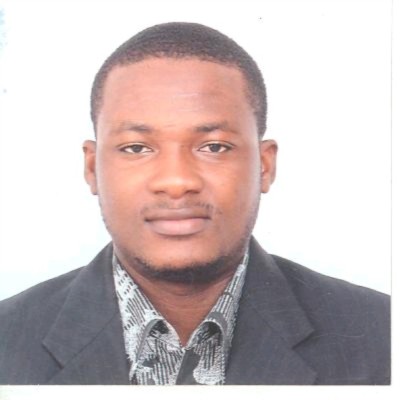
Title: DETECTION OF COMMONLY ABUSED PSYCHOACTIVE SUBSTANCES USING FORENSIC HAIR ANALYSIS
Speaker
Dr. /Supt. Lawrence Kofi Acheampong
Forensic Correctional Physician Ghana
Abstract
A cross sectional study was conducted among the people in detention Centers. Participants were selected via simple randomization. A structured questionnaire and interviews were used to illicit responses for both qualitative and quantitative data.The study aimed to detect commonly abused psychoactive substances among inmates in selected detention Centers using forensic hair analysis techniques. An immunochemical test was performed using the urine for the following substances: Benzodiazepines (BZO), Cocaine (COC), Methamphetamine (METH:), Opiates (OPI), Marijuana (THC), and Tramadol (TML). Gas Chromatography Mass Spectrometry(GC-MS) was used to analyze the hair (n=52) samples to confirm the presence of the commonly abused psychoactive substance (i.e. Cannabis metabolites-THC, CBN and CBD) following the immunochemical urine test.A total of 84% of participants indicated that they frequently used cannabis. This was confirmed in the urine and hair test results where 76.2% and 55.8% of inmates tested positive for metabolites of cannabis, respectively.From the outcome, it can be concluded that in detecting the use and abuse of drugs among inmates, a policy should be implemented in using both urine and hair analysis as a principal focus.
Biography
Supt./Dr. Lawrence Kofi Acheampong is a Certified Forensic Investigation Professional with the IICFIP, USA and IACDECFP-UK. He is a Postgraduate Researcher with the Department of Molecular Medicine (Chemical Pathology) at the Kwame Nkrumah University of Science and Technology (KNUST) with interest in Forensic Medicine(Toxicology). After completing his Bachelors Degree in Human Biology, Medicine, and Medical Degree in Medicine and Surgery ( MB,ChB), he worked in a United Nations Level IV hospital as well as other tertiary hospital both in Ghana and some African countries. He further specialized in Forensic Science and completed his Master of Philosophy ( MPhil). He finished his Master of Business Administration( MBA) with specialization in Healthcare Management at the Hochschule für angewandtes Management. He is an Officer of the Ghana Correctional Service and serves in the largest prison in the country as the Forensic Correctional Physician and a trained Counterterrorism Rescue and Response Medic. He has over a decade experience in Forensic Medicine practice in facilitating courses and developing curriculum for forensic training across the world.He has published papers in reputed journals and serves as the Medical Director of the Ghana Prisons Service.

Title: INVESTIGATING OCCUPATIONAL FRAUD THROUGH FORENSIC AUDITING TECHNIQUES
Speaker
Dr. Stacy Ann Nwodo
Charisma University United Kingdom
Abstract
This paper aims to explore the application of forensic auditing techniques in uncovering occupational fraud and shedding light on the underlying factors contributing to fraudulent behavior. The research methodology employed in this study involved a comprehensive review of existing literature, including academic journals, industry reports, and case studies, to gain insights into the various forensic auditing techniques used to investigate occupational fraud. The paper examined the different types of occupational fraud, such as asset misappropriation, corruption, and financial statement fraud, and discusses the specific red flags and warning signs associated with each. The findings of this study highlighted the significance of preventive measures and proactive detection strategies to mitigate the risks of occupational fraud. It emphasized the importance of implementing robust internal controls, conducting periodic risk assessments, and fostering a strong ethical culture within organizations. Furthermore, this research investigated the integration of advanced technologies, such as data analytics, artificial intelligence, and machine learning, in forensic auditing processes. The paper concludes by emphasizing the need for a multidisciplinary approach to combating occupational fraud, which involves collaboration between forensic auditors, internal auditors, management, and other relevant stakeholders.
Biography
Dr. Stacy Ann Nwodo ( Mrs.) is a scholar-practitioner and holds a doctorate degree in Forensic Accounting and Audit from the prestigious Charisma University, Turks and Caicos Islands UK, and another PhD in the field of Security and Strategic Studies from Nasarawa State University, Nigeria. Mrs. Nwodo is a quintessential administrator, a licensed Forensic Expert and a Chartered Accountant. She is a Fellow and Global President of the International Academy of Criminology, Disaster, Emergency and Forensic Professionals,- IACDEFP-UK. Also the current Country Director of International Institute of Certified Forensic Investigation Professionals (IICFIP) Nigeria, the Director Operations and Strategy (DOS) of the International Academy of Forensics (IAF), the Alumina Director of Charisma University, Turks and Caicos Island Uk, and the Lead Managing Consultant for JJTC Consulting Ltd and International College of Disaster Management and Forensic Studies (ICDMFS). She has presented research papers in international conferences and has facilitated the development of curriculum and training students and professionals in the field of Forensics across the world.
“ Will be updated soon...”
+91 9491 456 452
Door No.200, Immidhihalli Main Road, Whitefield-560066, Bangalore, India
About Us
Global Scientific Guild organizes conferences and webinars to promote quality research and real world impact in an atmosphere of true international co-operation between scientists, doctors, professors, practitioners, engineers and industry by bringing together the world class renowned personalities to discuss the latest developments and innovations at one common platform.